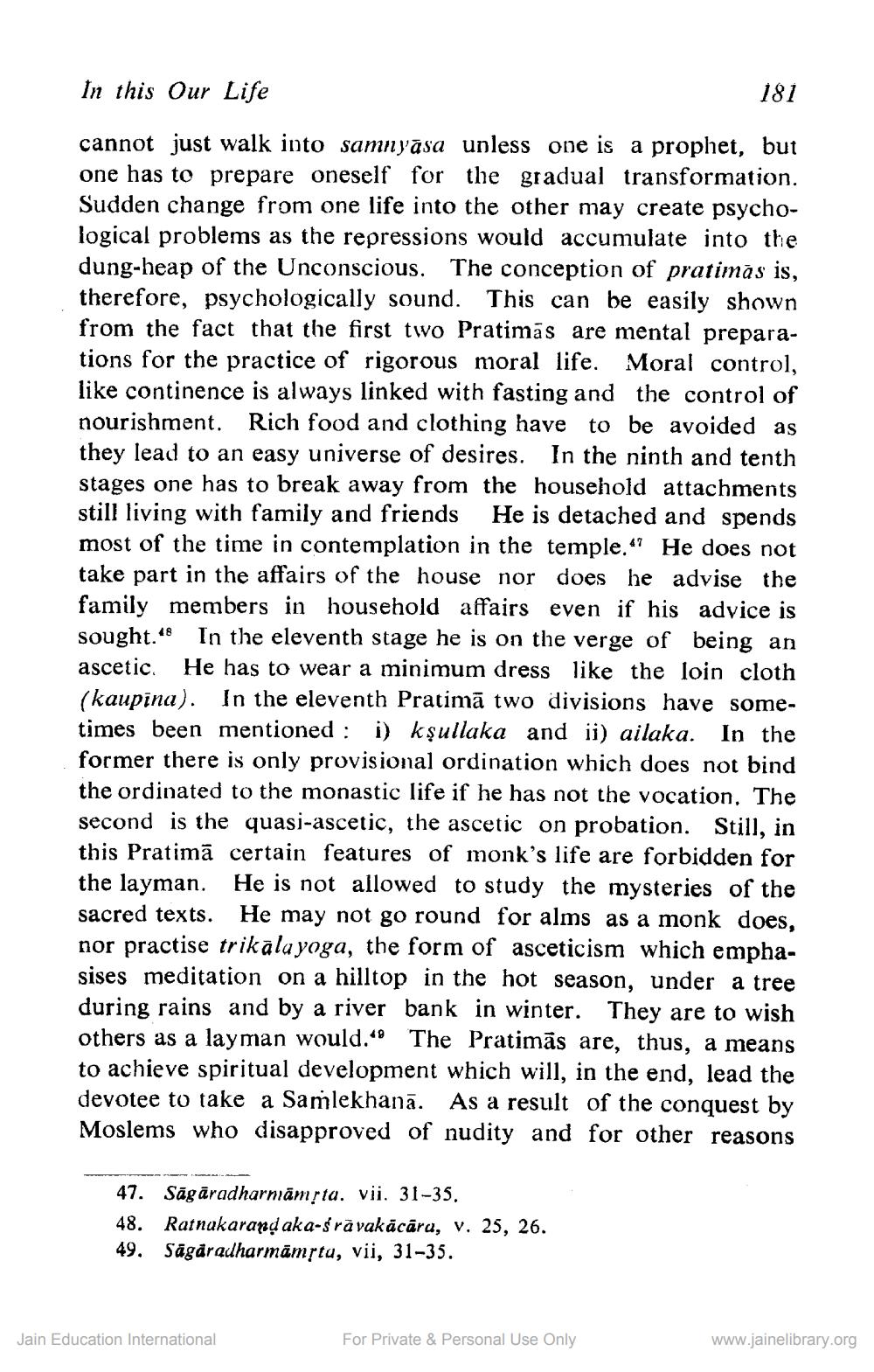________________
In this Our Life
181
cannot just walk into samnyasa unless one is a prophet, but one has to prepare oneself for the gradual transformation. Sudden change from one life into the other may create psychological problems as the repressions would accumulate into the dung-heap of the Unconscious. The conception of pratimās is, therefore, psychologically sound. This can be easily shown from the fact that the first two Pratimās are mental preparations for the practice of rigorous moral life. Moral control, like continence is always linked with fasting and the control of nourishment. Rich food and clothing have to be avoided as they lead to an easy universe of desires. In the ninth and tenth stages one has to break away from the household attachments still living with family and friends He is detached and spends most of the time in contemplation in the temple. He does not take part in the affairs of the house nor does he advise the family members in household affairs even if his advice is sought. In the eleventh stage he is on the verge of being an ascetic. He has to wear a minimum dress like the loin cloth (kaupina). In the eleventh Pratimā two divisions have sometimes been mentioned : i) kşullaka and ii) ailaka. In the
rmer there is only provisional ordination which does not bind the ordinated to the monastic life if he has not the vocation. The second is the quasi-ascetic, the ascetic on probation. Still, in this Pratimā certain features of monk's life are forbidden for the layman. He is not allowed to study the mysteries of the sacred texts. He may not go round for alms as a monk does, nor practise trikala yoga, the form of asceticism which emphasises meditation on a hilltop in the hot season, under a tree during rains and by a river bank in winter. They are to wish others as a layman would." The Pratimās are, thus, a means to achieve spiritual development which will, in the end, lead the devotee to take a Samlekhanā. As a result of the conquest by Moslems who disapproved of nudity and for other reasons
47. Sāgāradharnāmsta. vii. 31-35. 48. Ratnakarandaka-s rāvakācāru, v. 25, 26. 49. Sägàradharmāmstu, vii, 31–35.
Jain Education International
For Private & Personal Use Only
www.jainelibrary.org




